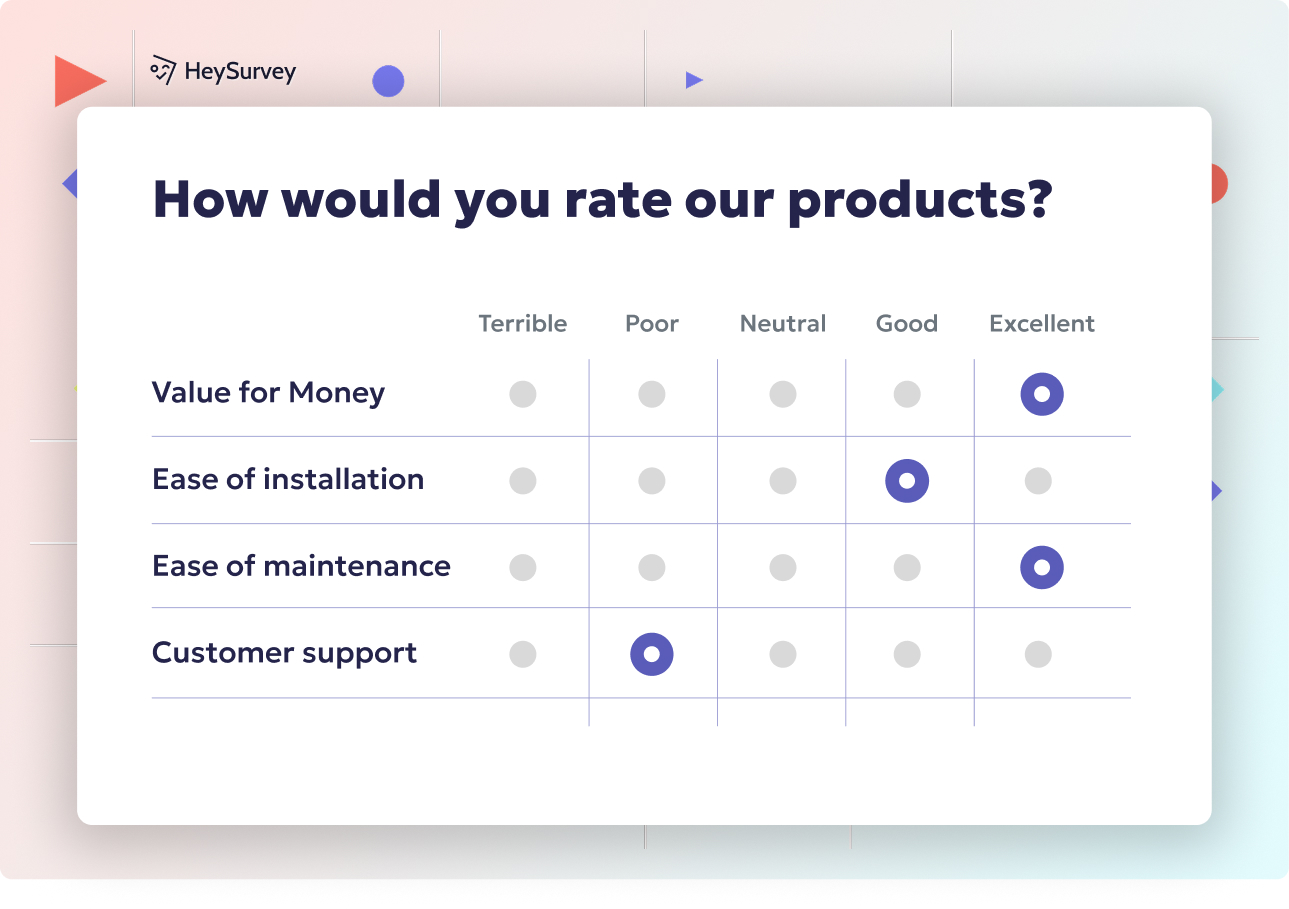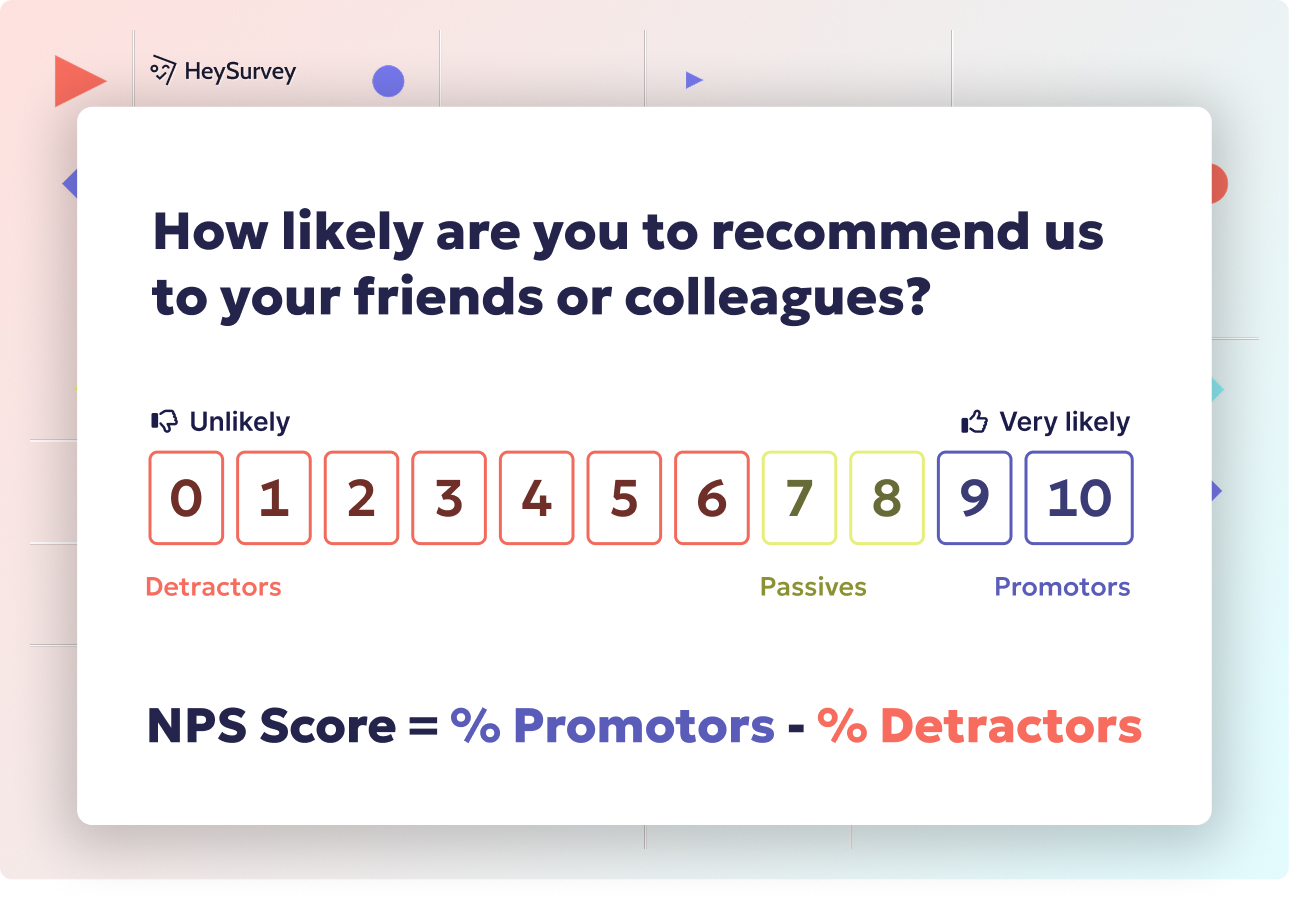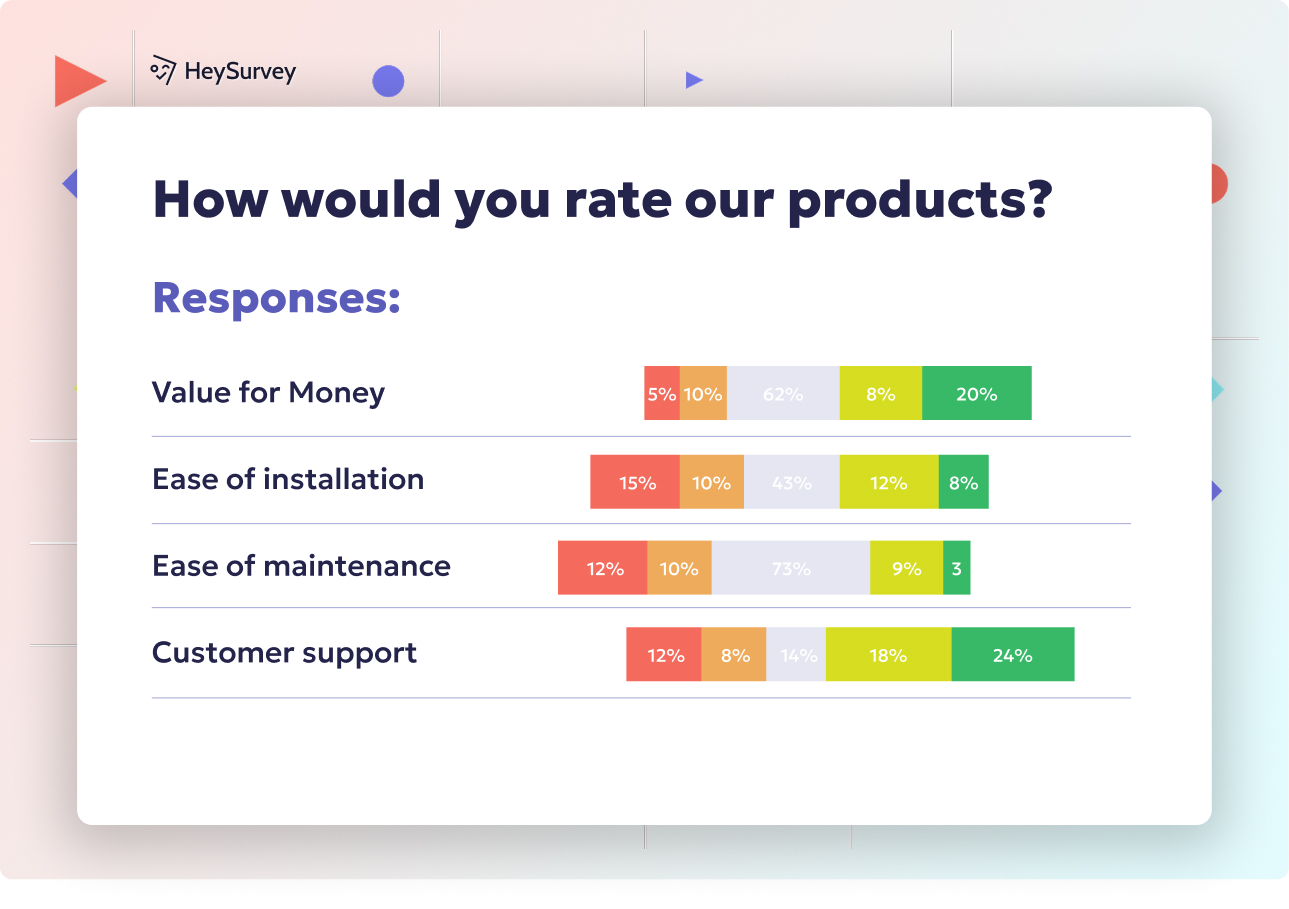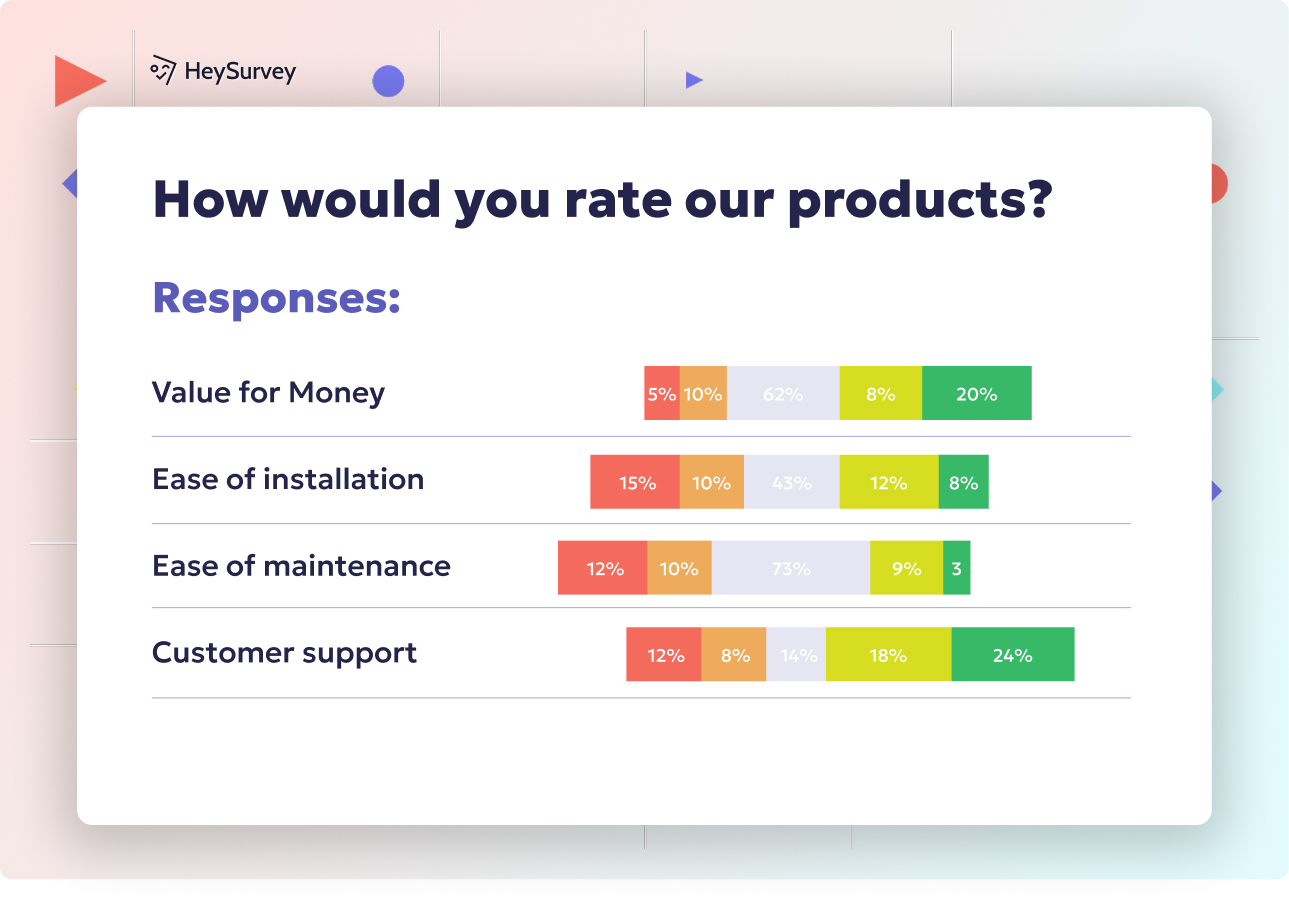29 Effective Domestic Violence Survey Questions: Types & Uses
Explore 28 essential domestic violence survey questions covering types, uses, and best practices for effective data collection and support.
Domestic violence hides in the shadows, but surveys shine a light. Asking the right questions is like handing out flashlights—every answer helps survivors, programs, and policies see clearly. In this article, we unpack what to ask, why to ask it, and how to make every question count in the fight against all types of domestic abuse.
Prevalence & Incidence Survey Questions
Why and When to Use This Survey
Measuring how widespread domestic violence is can seem daunting, but it’s crucial for tackling the issue head-on. These surveys are the backbone for public health agencies, non-profits, and researchers who need evidence—before they can ask for more funds, design new outreach, or sharpen policies, they need numbers!
You’ll find this survey type sparkling in annual studies, community needs assessments, or academic reports checking if intervention programs are making a dent. Counting cases of physical, emotional, financial, or digital abuse helps everyone understand what’s really happening behind closed doors.
Organizations use these questions to:
Establish a baseline for intervention programs
Track changes over time within neighborhoods, towns, or even countries
Understand hidden populations who might not otherwise come forward
By nailing down the real scale of the problem, agencies can pinpoint where resources—and urgency—are needed most. It’s detective work, but with the community’s health at stake.
Sample Questions
In the past 12 months, has a current or former partner ever hit, slapped, or otherwise physically hurt you? (Yes/No)
How often have you felt frightened of your partner’s behavior in the last year? (Never / Rarely / Sometimes / Often)
Have you experienced unwanted sexual contact from a partner since age 15? (Yes/No)
Has a partner ever prevented you from seeing friends, family, or going to work/school? (Yes/No)
If you experienced any of the above, did you seek help? (Yes / No / Prefer not to say)
Carefully worded, these sample questions offer clarity, respect privacy, and provide concrete stepping stones for real change.
A study found that 39% of women attending general practice had experienced domestic violence, yet only 12% recalled being asked about it by their doctor. (pubmed.ncbi.nlm.nih.gov)

Creating your domestic violence survey with HeySurvey is a breeze, even if you’re brand new to the platform. Follow these simple steps, and you’ll have a live survey ready to gather vital insights in no time!
Step 1: Create a New Survey
Head over to HeySurvey.
Click on “Create Survey” to start fresh or open a pre-built template specific to domestic violence surveys with the button below.
Give your survey an internal name that helps you keep things organized.
You’re now inside the Survey Editor, which is your playground for adding questions, designing, and settings.
Step 2: Add Questions
Click “Add Question” at the top of the editor or between existing questions.
Pick the question type that fits best—like Choice, Text, Scale, or Statement.
Type out your question, add descriptions if needed, and set whether the question is required or optional (we recommend giving people the option to skip sensitive questions with “Prefer not to say”).
If you wish, add images, format text using markdown, and arrange questions in your desired order.
Use branching (optional) to make your survey smart—showing different questions based on previous answers.
Step 3: Publish Your Survey
When your questions are set, hit Preview to see how it looks from a respondent’s view.
Make tweaks if needed, then click Publish to activate your survey.
You will get a shareable link to distribute via email, social media, or embed into your website.
Bonus Step 1: Apply Branding
Add your organization’s logo to the survey’s top-left corner for that professional touch.
Open the Designer Sidebar to customize colors, fonts, backgrounds, and layouts—matching your branding or creating a soothing survey vibe.
Bonus Step 2: Define Settings
Use the Settings Panel to control survey availability by setting start and end dates or limiting the number of responses.
Add a redirect URL after survey completion to guide respondents to resources or your homepage.
Enable options like allow viewing of results if you want participants to see aggregated data.
Bonus Step 3: Skip Into Branches
Set up survey branching so respondents only see questions that apply to them—making the experience shorter, kinder, and more relevant.
Customize endings based on responses to offer tailored messages, resources, or encouragement.
That’s it! Your domestic violence survey on HeySurvey is now primed to collect sensitive but essential data, all while keeping participants safe and respected. Ready to dive in? Click the button below to start from a tried-and-true template or create your own masterpiece.
Survivor Experience & Needs Assessment Survey Questions
Why and When to Use This Survey
When crises hit, survivors have immediate and longer-term needs—think housing, medical care, legal protection, and support services. But no two stories are identical, and knowing what’s most urgent for whom is key. Needs assessment surveys are the Swiss Army knife for shelters, crisis lines, healthcare systems, and researchers who want an honest inventory.
These questions help shelters tailor beds, kitchens, and counseling to suit the crowd coming through the door. Healthcare professionals use them to discover barriers survivors face in getting help. For NGOs and advocates, these tools expose the cracks—the gaps in services everyone keeps tripping over.
Key uses include:
Discovering systemic obstacles by directly asking survivors
Identifying what services are missing in a network or region
Improving the timeliness and fit of crisis interventions
It's hard to meet needs you’ve never heard about, so a respectful, trauma-informed needs assessment gives every survivor’s story a chance to guide positive change.
Sample Questions
Which of the following services have you needed most urgently in the past six months? (Check all that apply)
On a scale of 1–5, how safe did you feel while accessing emergency shelter?
What barriers stopped you from seeking medical care after abuse? (Open-ended)
How helpful was the legal advocacy you received? (Very helpful → Not at all)
What additional resources would have improved your situation? (Open-ended)
Each sample question nudges survivors to reflect and contribute ideas—making them the experts in their own recovery and safety.
A study developed the Reproductive Health Needs of Domestic Violated Women Scale (RHNVWS), a reliable and valid tool for assessing reproductive health needs among women experiencing domestic violence. (reproductive-health-journal.biomedcentral.com)
Safety Planning & Risk Assessment Survey Questions
Why and When to Use This Survey
Danger doesn’t punch a time clock, which is why safety planning and risk assessment questions need to respond to what’s happening right now. These are the trusty tools of advocates, healthcare providers, police, and even friends who want to check in after a crisis or escalate a safety plan.
They’re often used at first contact—when someone calls a hotline or meets an outreach nurse. Sometimes they’re used regularly, to make sure safety plans are up to date as risks shift. Real-time data can be a lifesaver (literally).
Risk assessment surveys help:
Identify imminent threats that require urgent intervention
Update personal safety plans if someone’s situation changes
Empower survivors to think ahead about emergency contacts and safe spaces
No amount of data replaces gut instinct, but strategic questions make it easier to spot dangerous trends and prevent tragedies.
Sample Questions
Has your partner threatened to kill you, children, or themselves within the last month? (Yes/No)
Does your partner have access to firearms or other weapons? (Yes/No)
Have incidents of violence become more frequent or severe lately? (Yes/No)
Are there safe places you can stay if you need to leave quickly? (Yes/No/Unsure)
Do you have a trusted person who knows your safety plan code word? (Yes/No)
These direct questions—though sometimes intense—open up space for honest reflection, action, and hope for safer tomorrows.
Attitudes, Beliefs & Social Norms Survey Questions
Why and When to Use This Survey
No matter how good your laws, community attitudes and beliefs can make—or break—a domestic violence initiative. Sometimes, the biggest fight isn’t in the courts, but over the dinner table or on the group chat. These survey questions offer a window into the invisible rules guiding what’s “normal.”
Social norms surveys are gold for public awareness campaigns, school or youth group programs, and advocates trying to spark cultural change. Understanding attitudes helps frame outreach in ways that stick.
These surveys are vital for:
Measuring whether harmful beliefs are fading or persisting
Shaping media campaigns to target stubborn myths
Tracking social progress (or backlash) over time
Knowing what people really think lets you craft messages and interventions that actually connect, rather than bounce off community walls.
Sample Questions
“Domestic violence is a private family matter.” Do you agree or disagree? (Likert scale)
How acceptable is it for a partner to monitor the other’s phone or social media? (Completely acceptable → Not acceptable)
In your opinion, what percentage of domestic violence reports are false? (0–100%)
If you suspected a friend was being abused, how likely are you to intervene? (Very likely → Very unlikely)
Children who witness domestic violence are unharmed as long as they aren’t hit themselves. Agree/Disagree?
With each attitudinal question, you peel back the layers on society’s real feelings, setting the stage for growth and healing.
A study in rural Uganda found that individuals' personal beliefs and perceived norms about intimate partner violence are significantly influenced by contextual details, such as the intentionality behind a partner's actions. (pmc.ncbi.nlm.nih.gov)
Perpetrator Behavior & Accountability Survey Questions
Why and When to Use This Survey
Stopping the cycle takes more than helping survivors—it means focusing on perpetrator accountability. Surveys aimed at those who’ve caused harm bring their actions into focus and help courts, probation officers, and treatment providers monitor progress.
Offender surveys aren’t about finger-pointing; they’re about honesty and growth. Used wisely, they:
Assess whether intervention or counseling programs actually work
Track patterns and triggers for abusive behaviors
Support individuals in making lasting, positive change
Gathering this information is delicate, but vital for breaking old patterns and making communities safer.
Sample Questions
In the past month, have you intentionally damaged your partner’s belongings? (Yes/No)
How often have you used insults or humiliation to control your partner? (Never → Very often)
Have you attended all mandated counseling sessions? (Yes/No/Partially)
What triggers most often precede your abusive behavior? (Open-ended)
Since starting the program, how confident are you in using non-violent conflict resolution? (1–5 scale)
By using accountability questions, programs support honest self-reflection and celebrate steps toward non-violence.
Service Utilization & Satisfaction Survey Questions
Why and When to Use This Survey
The best services are built on candid feedback from those who use them. Service utilization and satisfaction surveys ask survivors and community members the nitty-gritty: Are shelters easy to find? Are crisis line staff helpful? Where did things go sideways?
They’re essential for continuous improvement—the bread and butter of non-profits, crisis lines, health clinics, and funders who want to invest where it counts. Key reasons to use these questions:
Identify hidden barriers or access gaps in lifesaving services
Find out which efforts are working and which need a makeover
Justify funding (or a total rethink) with concrete, survivor-driven data
Celebrating wins and fixing headaches usually starts with listening—and these questions make sure feedback doesn’t go in one ear and out the other.
Sample Questions
How easy was it to locate information about our shelter services? (Very easy → Very difficult)
Did staff treat you with respect and sensitivity? (Always → Never)
Were your cultural or language needs met? (Yes/No/Partially)
How likely are you to recommend our services to others in similar situations? (0–10 NPS)
What one change would most improve our services? (Open-ended)
Every feedback question is a compass pointing to what matters most for people seeking safety.
Workplace & Organizational Policy Compliance Survey Questions
Why and When to Use This Survey
Work isn’t just where we show up to get paid—it should also be a place of safety for everyone. Organizational climate surveys check whether workplaces are walking the talk when it comes to supporting employees affected by domestic violence.
HR departments, unions, and even academic researchers deploy these questions to gauge if policies like leave, confidentiality, and awareness training actually make it off the page. They help organizations:
Assess if staff understand and trust domestic violence policies
Uncover training gaps and offer targeted refreshers
Safeguard employee well-being, both on and off the clock
Workplace questions ensure that no one slips through the cracks just because they clocked in.
Sample Questions
Are you aware of the organization’s domestic violence leave policy? (Yes/No)
Do you feel safe disclosing domestic violence concerns to HR? (Yes/No/Unsure)
Have you received training on recognizing signs of domestic violence among colleagues? (Yes/No)
How confident are you that the organization would protect your confidentiality if you disclosed abuse? (1–5 scale)
Has the workplace ever provided information on local domestic violence resources? (Yes/No)
Policy compliance questions clarify whether organizations are meeting their promises—or need a little nudge in the right direction.
Dos and Don’ts: Best Practices for Domestic Violence Surveys
Drafting a domestic violence survey isn’t just about clever wording; it’s about weaving safety, compassion, and effectiveness into every question. The stakes are high, so don’t skip this checklist!
Do:
Obtain informed consent and offer immediate resources at survey end
Use trauma-informed, non-judgmental language and avoid victim-blaming phrasing
Allow anonymous or confidential participation; encrypt data
Pilot-test questions with survivors and experts for clarity and sensitivity
Comply with legal mandates (like mandatory reporting) and ethics reviews
Offer participant emotional support (list hotlines, have a counselor on call)
Don’t:
Force participants to answer every question—always include “Prefer not to say”
Conduct surveys when the abuser may be present or monitoring devices
Neglect cultural considerations—translate and adapt questions thoughtfully
Store identifying information any longer than absolutely necessary
Properly following these survey best practices means you’ll get honest, useful answers—while keeping everyone safe, respected, and empowered.
Conclusion & Next Steps
Domestic violence surveys are powerful tools to guide evidence-based, survivor-centered responses. They shape better programs, smarter policies, and safer communities. Take time to use best practices, seek feedback, and apply what you learn. Each data point is a step toward hope. Keep asking, keep listening, and keep building a future free from violence.
Related Health Survey Surveys

30+ Health Care Satisfaction Survey Questions: Templates & Tips
Explore 30 expert health care satisfaction survey questions across six types to boost patient fee...

31 Body Image Survey Questions: Types, Usage & Best Guide
Discover 35 expert body image survey questions across 7 proven types to measure body satisfaction...

31 Essential Domestic Violence Survey Questions: Types & Uses
Explore 30+ domestic violence survey questions covering types, uses, samples, and best practices ...

